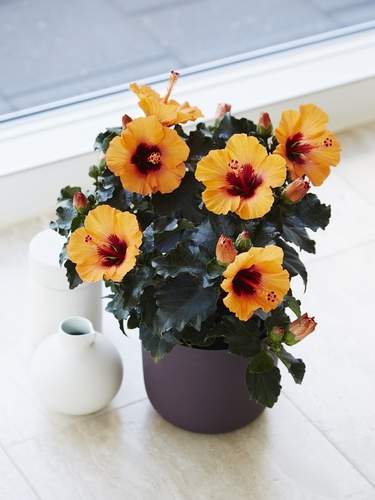The hibiscus Petit Orange is part of a line of smaller-flowered, more compact hibiscus by Danish plant breeder Graff Breeding. MUST CREDIT: Graff Breeding The tropical hibiscus produces some of the most lurid blossoms in the garden – a broad, ruffled, flared collar around a central antenna full of knobbly, nectar-rich protuberances. The flower seems to embody some sinful, Gauguinesque escape to the tropics. So why haven’t we all got them? They remain reasonably popular, especially among newer gardeners who have yet to discover the rewards of subtlety, but the tropical hibiscus can break your heart. There is a price for its voluptuary nature: Hibiscus rosa-sinensis is demanding of water and food, pest-prone, and difficult to overwinter indoors. I have embraced other tropicals that I might have once considered over the top – banana plants, elephants ears, cannas, even coleus, but for the tropical hibiscus, I can’t quite shake the image of it being used to create instant effects in tiki bars and around hotel swimming pools. If you are unburdened by such associations, if you are up to the challenge of keeping it or are happy to trash the thing at the end of the growing season (a valid tack), then grab one by all means. There is still enough of the growing season ahead of us in the Mid-Atlantic to warrant it, and there are lots of choices. You can find them at the box store, in garden centers and online houseplant vendors. I would look for named varieties with superior traits such as more bushiness and flowering stamina. A few years ago, a friend showed me his potted hibiscus; the petals were a copper brown. I thought he had forgotten to deadhead a faded flower until he said that was its peak display and wasn’t it marvelous? I remained quiet but regarded it as the worst thing since sliced bread. Alas, this grotesque became a trailblazer for a whole class of “fancy” hibiscus that seem to outdo themselves in terms of unnatural hues, jarring color combos and sheer weirdness. My view is that if you’re going […]






